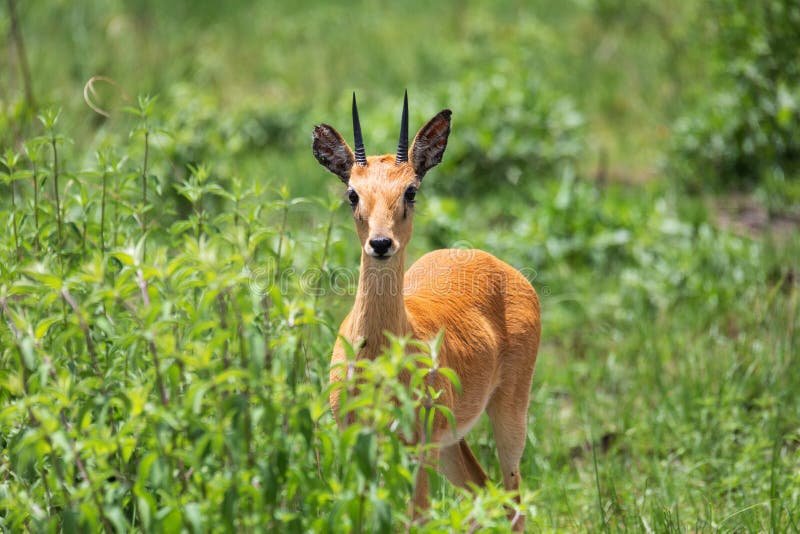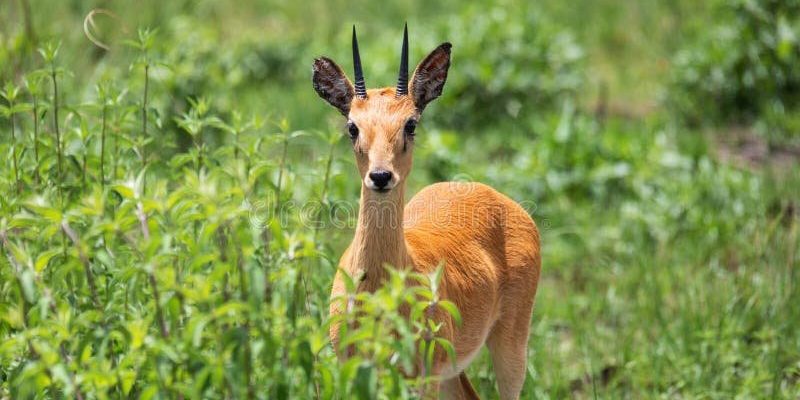
Imagine sipping your morning coffee while taking a moment to appreciate the unique environments that support life. Oribis thrive in grasslands and bushy areas, where their size and coloring help them blend into the surroundings. Just like how we might prefer cozy coffee shops over noisy bars, oribis also choose their homes based on comfort and safety. Let’s explore their habitat in more detail.
Understanding the Oribi’s Preferred Habitat
Oribis primarily inhabit open grasslands and savannahs, which offer them the perfect mix of cover and grazing opportunities. These areas are rich with low-growing vegetation, allowing oribis to forage for their favorite foods without exposing themselves to predators. The tall grasses serve as both a buffet and a safety net, enabling oribis to nibble while keeping a watchful eye out for danger.
Interestingly, these little antelopes are also known to favor areas near water sources. This could be a river, a dam, or even a small pond. Water isn’t just essential for drinking; it also supports the lush greenery that oribis love to snack on. Imagine trying to enjoy your coffee without a comfy chair—water-rich environments are vital for oribis to feel at home, just like quality seating is for us!
Geographic Distribution of Oribis
Oribis are primarily found in southeastern and southern Africa. Their range extends across countries like South Africa, Namibia, Botswana, Zimbabwe, and even parts of Tanzania. You might not find them wandering through big cities or heavily populated areas. Instead, they prefer the quieter, less disturbed regions where they can graze and hide without the constant threat of human activity.
The areas where oribis live can vary widely. From the rugged mountainous regions to flatter plains, these adaptable creatures find ways to thrive. If you picture a map of Africa, their range is like a patchwork quilt, with various environments stitched together to support their lifestyle.
The Importance of Grasslands for Oribis
Grasslands are not just a home; they are essential for the survival of oribis. These habitats are teeming with life, providing not only food but also a breeding ground for many species. The grasses in these areas offer cover and protection, allowing oribis to raise their young away from predators. Honestly, without these grasslands, oribis would face significant challenges in finding food and shelter.
Moreover, the dynamics of grassland ecosystems are fascinating. When you think of grazing animals, you might picture them munching on grass, but it’s more complex. The grazing habits of oribis help maintain the health of these ecosystems by preventing overgrowth and encouraging the growth of new plants. It’s like a delicate balancing act, where every creature plays its part.
Threats to Oribis’ Habitat
Unfortunately, the habitats of oribis are under threat. Human activities such as agriculture, urban expansion, and poaching have reduced their living space. As people clear land for farming or build new towns, the natural habitats of these animals shrink, making survival more challenging.
Additionally, climate change poses significant risks to their habitats. Changes in rainfall patterns and increasing temperatures can affect the availability of food and water. You might be wondering what this means for oribis. Simply put, their chances of thriving in a rapidly changing world depend on conservation efforts and our commitment to protecting the delicate balance of these ecosystems.
Conservation Efforts for Oribis
Recognizing the importance of oribis, several conservation programs aim to protect their habitats. Local wildlife organizations often work to restore areas that have been degraded by human impact. For example, they might plant native grasses that provide food and shelter, or create protected areas where oribis can roam freely without the threat of poaching.
You might also find community-based initiatives that involve local people in conservation efforts. By educating communities about the importance of oribis and their habitats, these programs foster a sense of ownership and responsibility. It’s like how we feel connected to our favorite coffee shops; when we invest in them, we care about their future!
Final Thoughts on Oribi Habitats
In conclusion, oribis are fascinating creatures that rely on specific habitats for their survival. From the grasslands of southern Africa to the sources of fresh water, every aspect of their environment plays a critical role in their lives. As we learn more about these little antelopes, it’s essential to appreciate the delicate balance that sustains their existence.
So, the next time you find yourself enjoying a delicious cup of coffee, take a moment to think about the incredible wildlife that shares our planet. Oribis may not be the first animal that comes to mind, but they remind us of the interconnectedness of life and the importance of conserving our natural world. Let’s make our efforts count, just like the oribis in their habitat!

